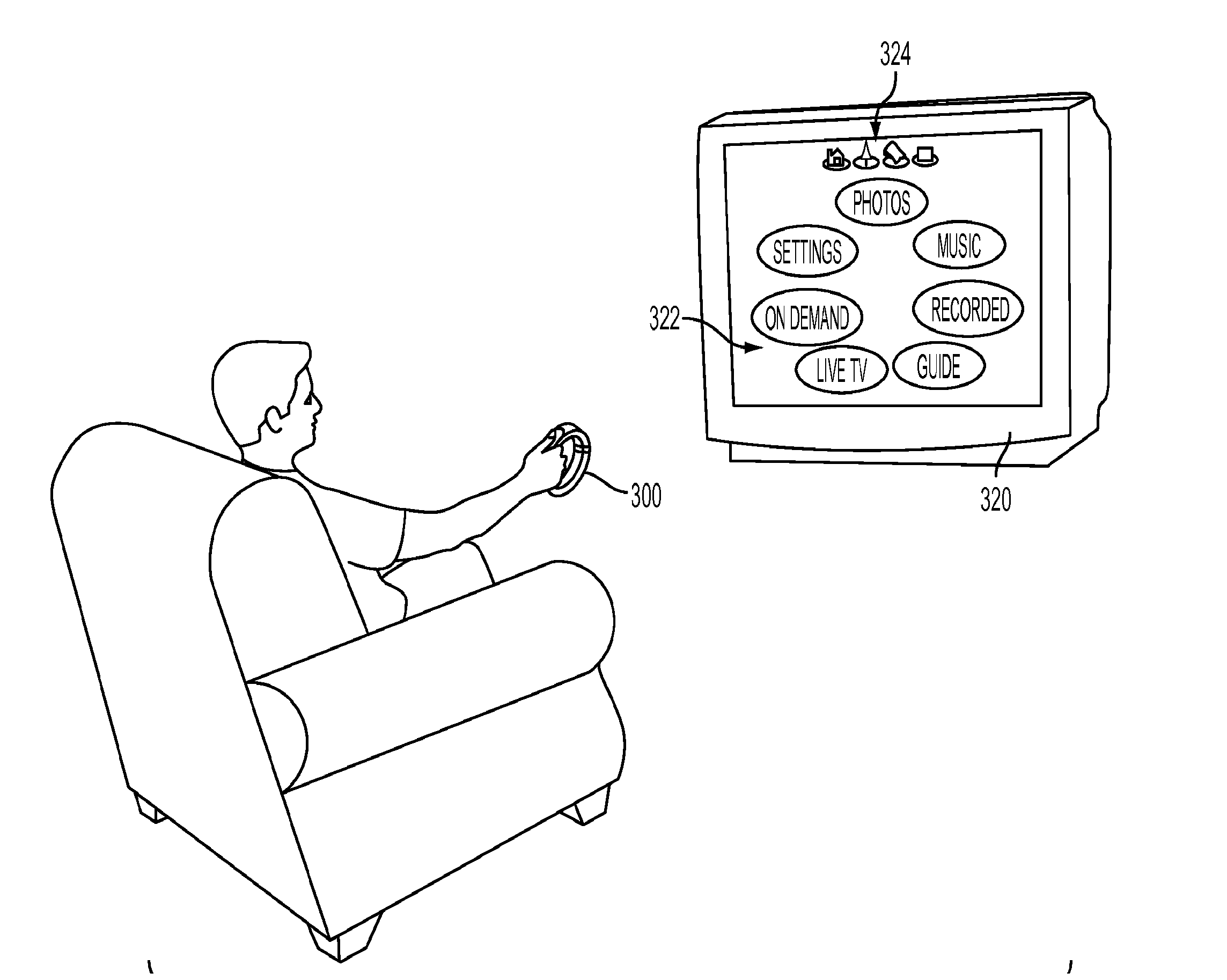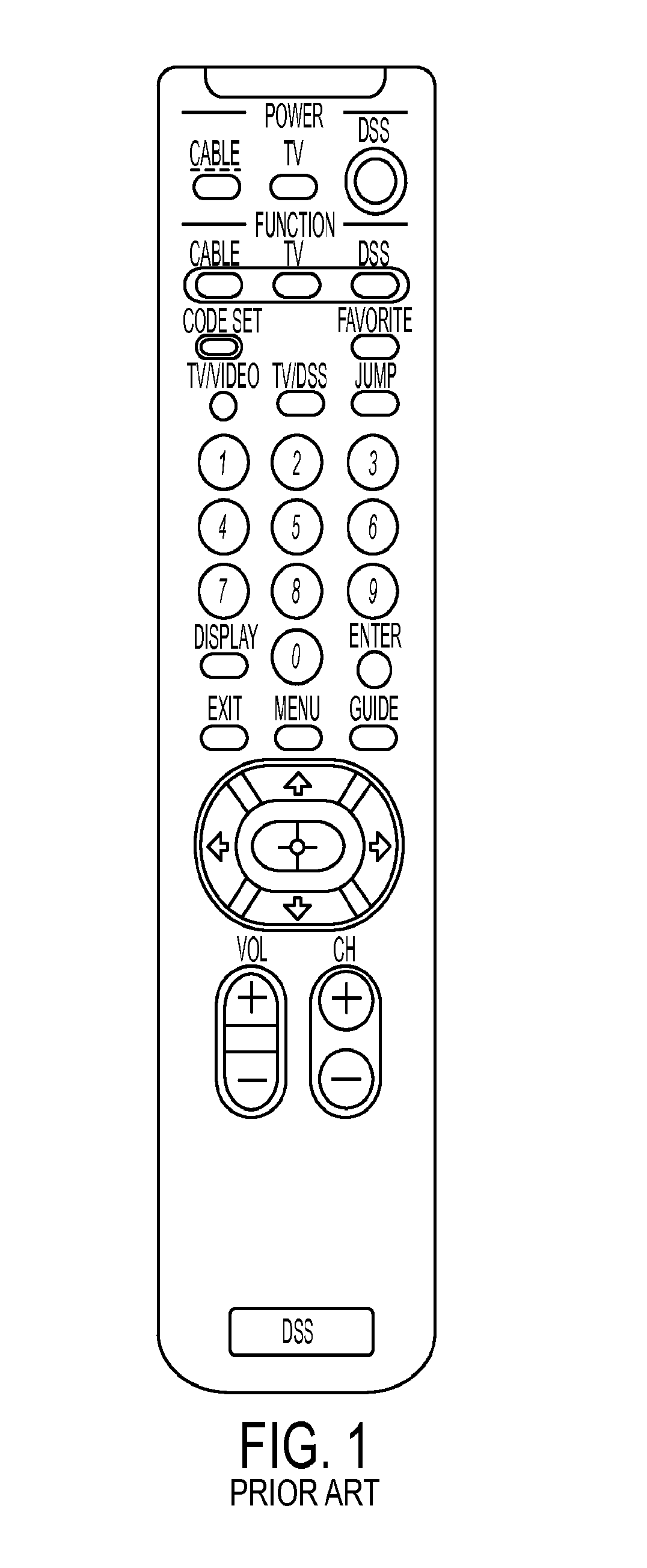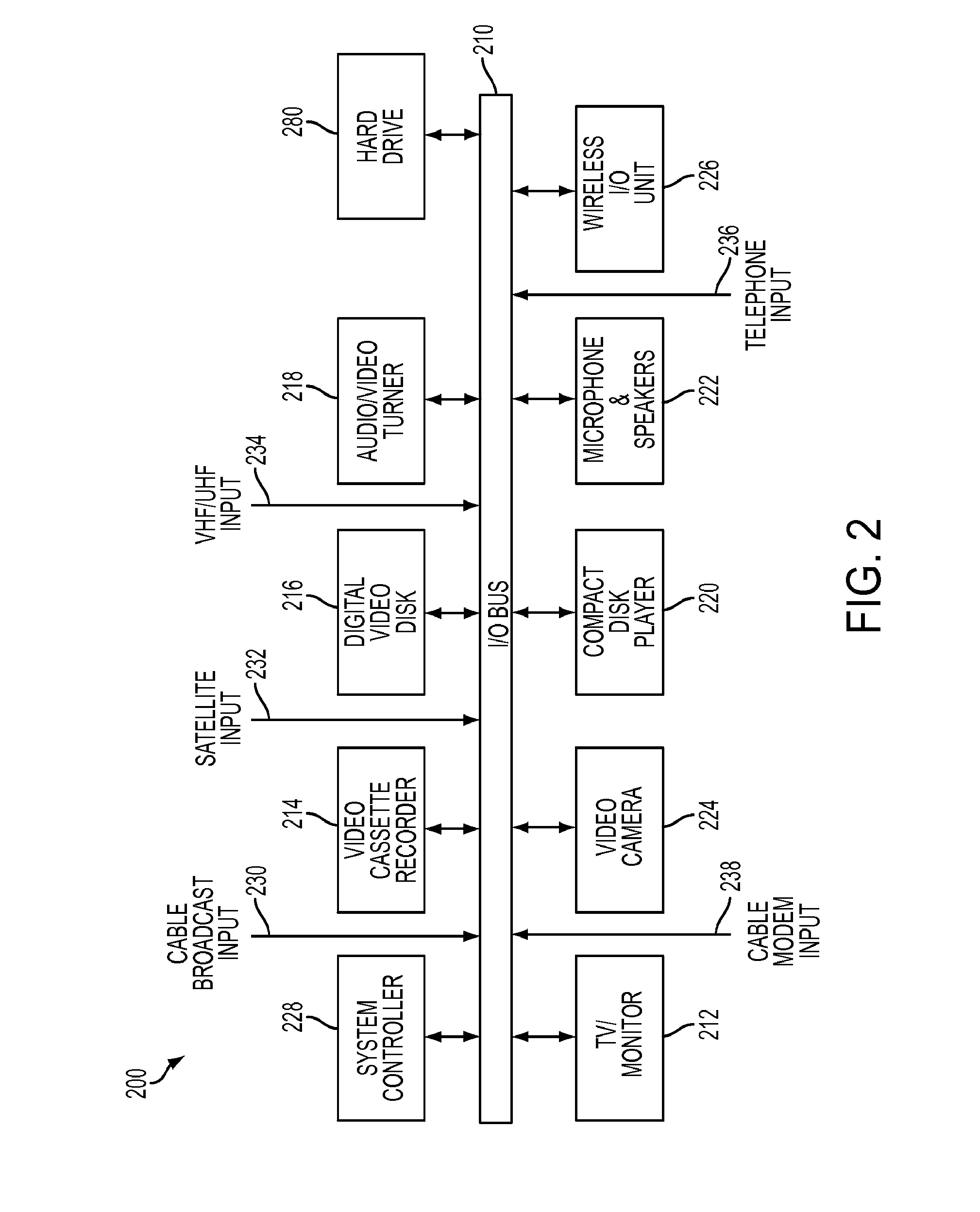Television sign on for personalization in a multi-user environment
a multi-user environment and sign-on technology, applied in the field of personalization through television sign-on in a multi-user environment, can solve the problems of affecting the commercial implementation of some services, increasing the time required for a viewer to review the available information and the complexity of the actions required to implement a selection, and not being fast nor simpl
- Summary
- Abstract
- Description
- Claims
- Application Information
AI Technical Summary
Benefits of technology
Problems solved by technology
Method used
Image
Examples
Embodiment Construction
[0022]The following detailed description of the invention refers to the accompanying drawings. The same reference numbers in different drawings identify the same or similar elements. Also, the following detailed description does not limit the invention. Instead, the scope of the invention is defined by the appended claims.
[0023]Exemplary embodiments provide a sign-on system and method that allow for the connected TV and devices interface to be personalized to an individual or a group so that various services can accommodate the viewer. Exemplary aspects of the system according to such embodiments include its streamlined login procedure, remote management features, and default behaviors to minimize inadvertent privacy violations in normal system use. Exemplary embodiments define a framework where the user can customize their experience and utilize a variety of access options based upon their personal tastes, interest and experience. Moreover, these embodiments provide for a “casual” ...
PUM
 Login to View More
Login to View More Abstract
Description
Claims
Application Information
 Login to View More
Login to View More - R&D
- Intellectual Property
- Life Sciences
- Materials
- Tech Scout
- Unparalleled Data Quality
- Higher Quality Content
- 60% Fewer Hallucinations
Browse by: Latest US Patents, China's latest patents, Technical Efficacy Thesaurus, Application Domain, Technology Topic, Popular Technical Reports.
© 2025 PatSnap. All rights reserved.Legal|Privacy policy|Modern Slavery Act Transparency Statement|Sitemap|About US| Contact US: help@patsnap.com



